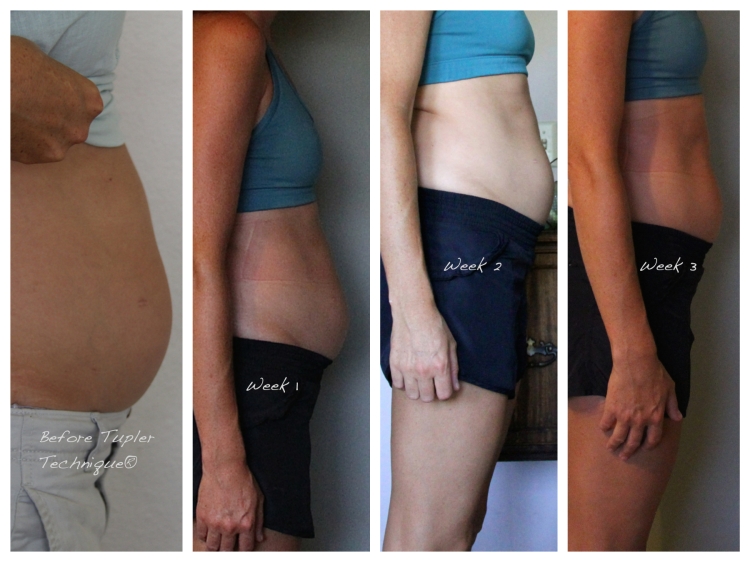Did You Know?
36% of postpartum women will discover they have a separation of their stomach muscles.
If you want to flatten out that post-delivery mummy tummy, you should go straight to the gym for a rigorous regimen of abdominal exercises, right? Wrong! Diastasis recti could be the cause of that rounded, pregnant-looking and even sore abdominal muscles, months or even years after giving birth.
Before you even think about doing an abdominal exercise, get a belly check to determine whether or not you do have a diastasis recti.
So . . . what is a Diastasis Recti?
A diastasis recti is a separation of your outer most abdominal muscles. The job of these muscles (called rectus abdominis), is to support your back and your organs.
So why should you care if your muscles are separated? Because separated muscles are weak muscles. Separated muscles cannot do their job of supporting your back and organs. To achieve a strong core, your muscles must be close together.

When the muscles separate, the connective tissue (linea alba) joining these muscles stretches sideways. This sideways stretching of the connective tissue causes it to become thinner and weaker. So what happens is this weak saran wrap-like connective tissue is now ineffectively supporting your belly button, back and organs, instead of the muscles if they were close together.
Women’s Health Physical Therapy is excited to be offering a specialized Diastasis recti treatment called the Tupler Technique® and is offered through our Postpartum Strong® program.

The Tupler Technique® is a research and evidenced based exercise program to treat diastasis recti which is a separation of the abdominal muscles. Casey Smith, PT, DPT, CSCS, an expert in treating diastasis recti, is licensed in this technique and has been working with women to help them close their diastasis and help them achieve their fitness goals. Closing a diastasis with the Tupler Technique® is all about healing connective tissue.
>>>> Check out these amazing before-and-after pictures!
3 reasons the Tupler Technique® helps you heal faster:
- Continuously approximating or bringing both the connective tissue and muscles closer together with the Diastasis Rehab Splint®. This takes the stretch off the “stretched out” connective tissue and puts the connective tissue in a better position to heal and do the Tupler Technique® exercises. This also puts the outermost abdominal muscles in a better position to do the exercises. To strengthen abdominal muscles they must be close together and move from front to back. When they are separated they will move sideways which not only does not strengthen the muscles but it stretches the connective tissue.
- Protect the connective tissue from getting stretched from activities and movements that stretch it (i.e crunches, forward crossover movements, downward facing abdominals or movements that flare the ribs)
- Develop transverse awareness and strength with the Tupler Technique® exercises so the transverse muscle can then be used with activities of daily living and also while working out. The Tupler Technique® exercises for diastasis recti will put tension on the “splinted” connective tissue which will help to make it stronger.
Making a diastasis smaller with the Tupler Technique® is also important before abdominal surgery (ie umbilical hernia) to prevent an incisional hernia and during pregnancy to prevent a c-section.

